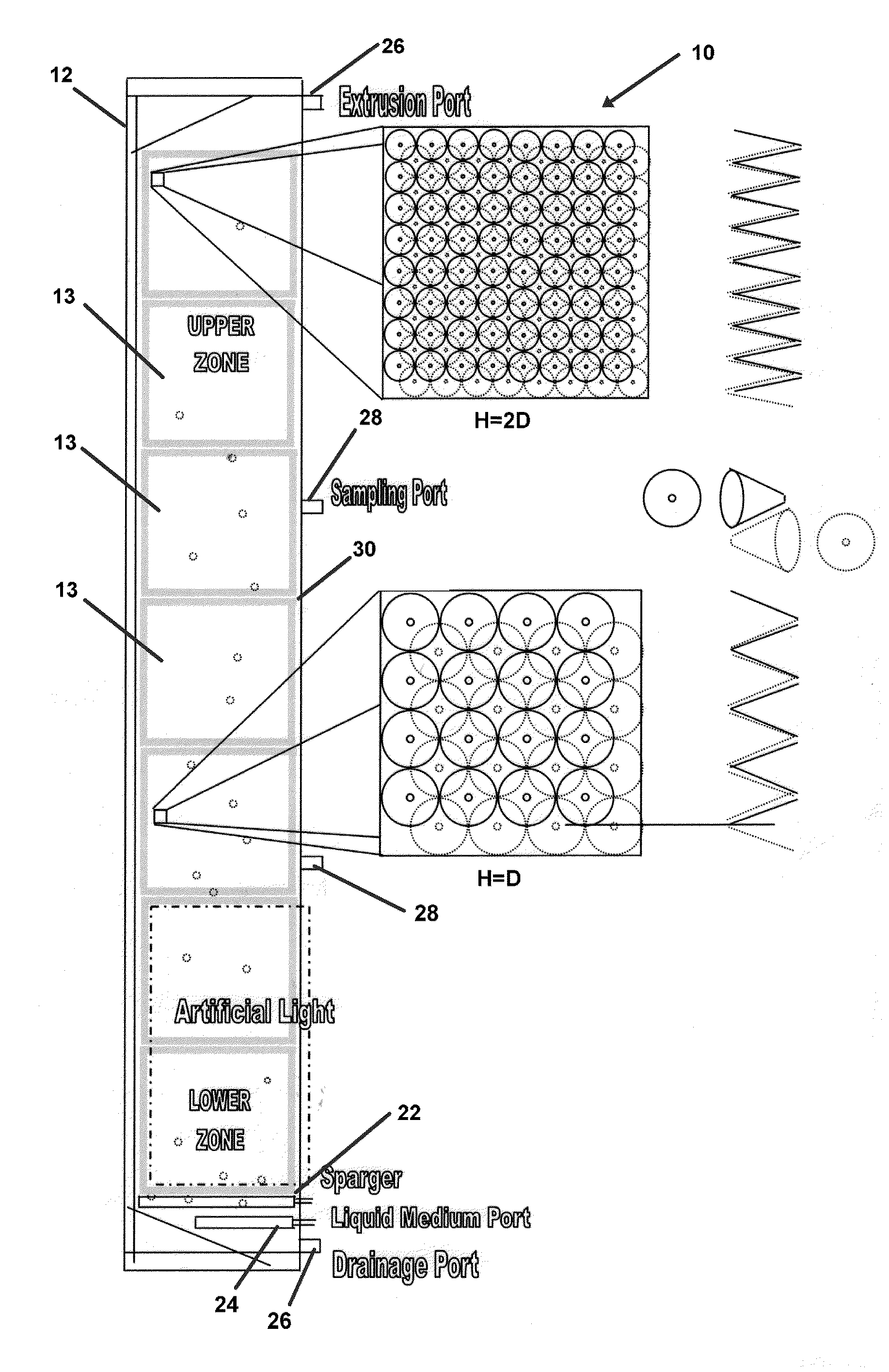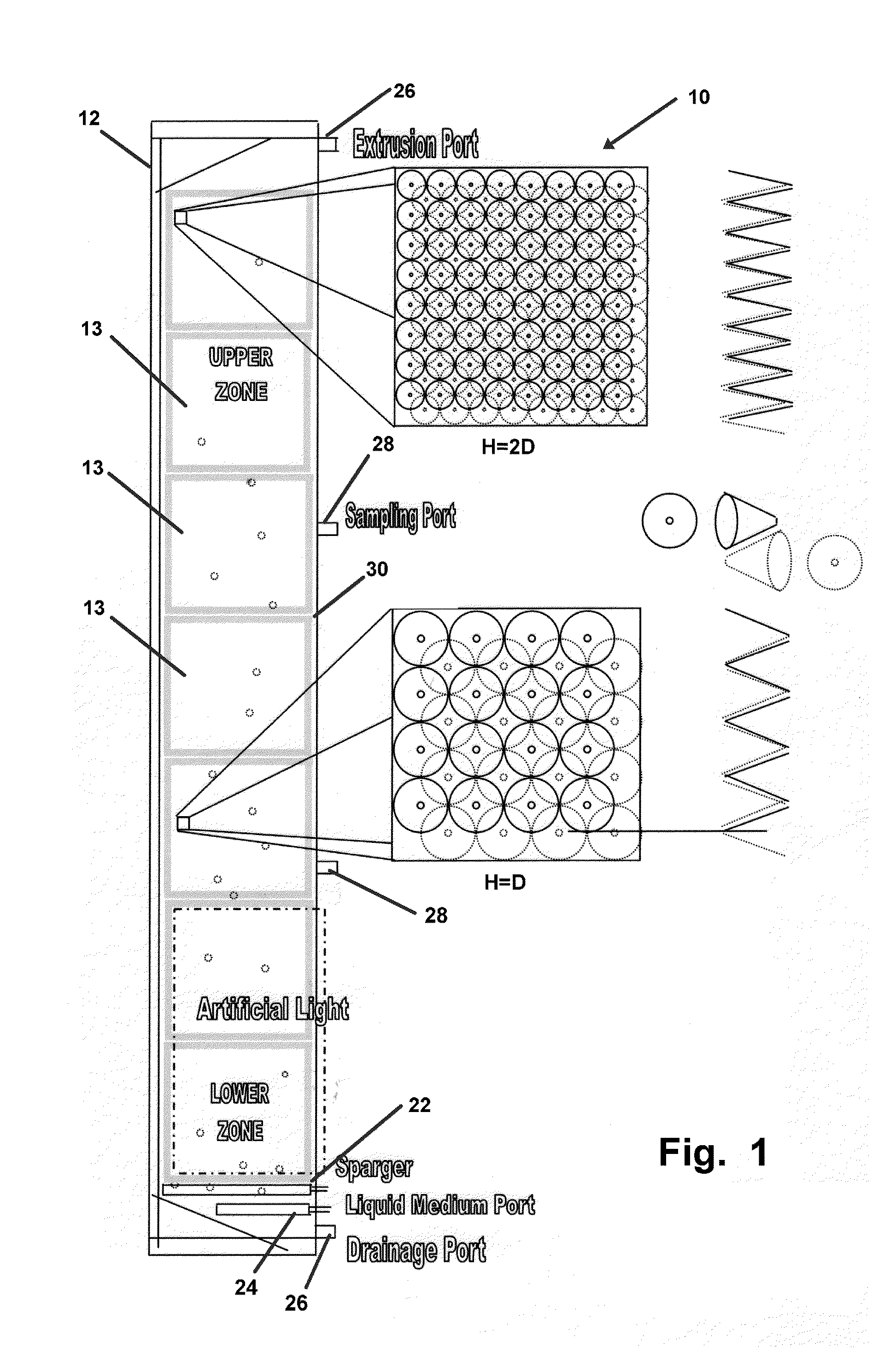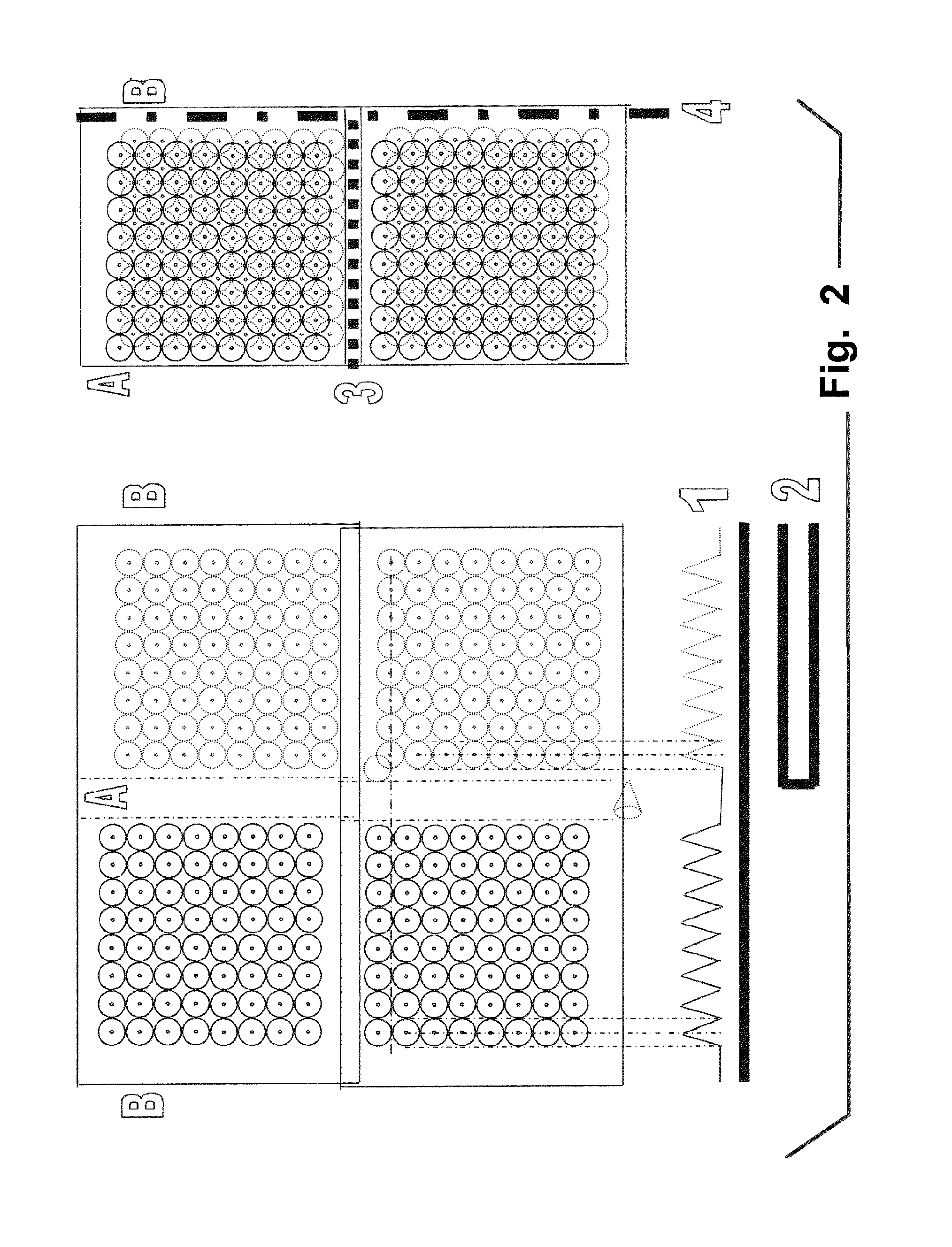Device and method for photosynthetic culture
a technology of photosynthesis and cell culture, applied in the field of photosynthesis cell culture, can solve the problems of limiting the overall culture growth, limiting the cell number concentration achieved in the algal culture, cell damage and possible death, and achieve the effect of optimizing the use of scattered light and higher irradian
- Summary
- Abstract
- Description
- Claims
- Application Information
AI Technical Summary
Benefits of technology
Problems solved by technology
Method used
Image
Examples
Embodiment Construction
[0065]Referring now to the drawings in FIGS. 1-13 wherein similar steps and components are identified by like reference numerals, there is seen in FIG. 1 a typical mode of the device 10 herein, showing a vertically disposed photopanel 12 formed of engaged membranes or segments 13. The photopanels 12 and engaged segments 13 are of a thin clear plastic material which is formed to the proper dimension and shape by any method which will produce the engaged segments 13 forming the photopanels 12 as described herein.
[0066]Currently the photopanels 12 are comprised or a plurality of thermoformed segments 13 each having sidewalls 15 (FIG. 9) employing opposing interlocking projections 14 herein referred to as “hollow trabeculae.” The distal ends 17 of the projections 14 are configured for a sealed engagement with apertures 19 formed in an opposing sidewall 15 of the formed segment 13. The plastic material should be of conventional inexpensive, preferably recyclable material such as PET, but...
PUM
| Property | Measurement | Unit |
|---|---|---|
| thickness | aaaaa | aaaaa |
| height | aaaaa | aaaaa |
| height | aaaaa | aaaaa |
Abstract
Description
Claims
Application Information
 Login to View More
Login to View More - R&D
- Intellectual Property
- Life Sciences
- Materials
- Tech Scout
- Unparalleled Data Quality
- Higher Quality Content
- 60% Fewer Hallucinations
Browse by: Latest US Patents, China's latest patents, Technical Efficacy Thesaurus, Application Domain, Technology Topic, Popular Technical Reports.
© 2025 PatSnap. All rights reserved.Legal|Privacy policy|Modern Slavery Act Transparency Statement|Sitemap|About US| Contact US: help@patsnap.com



